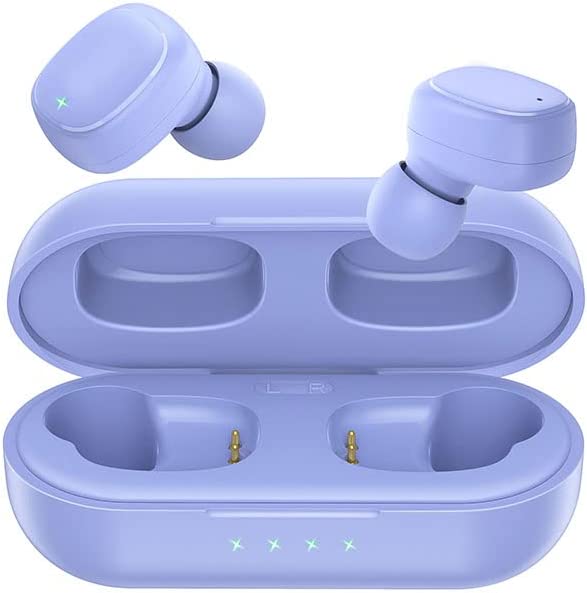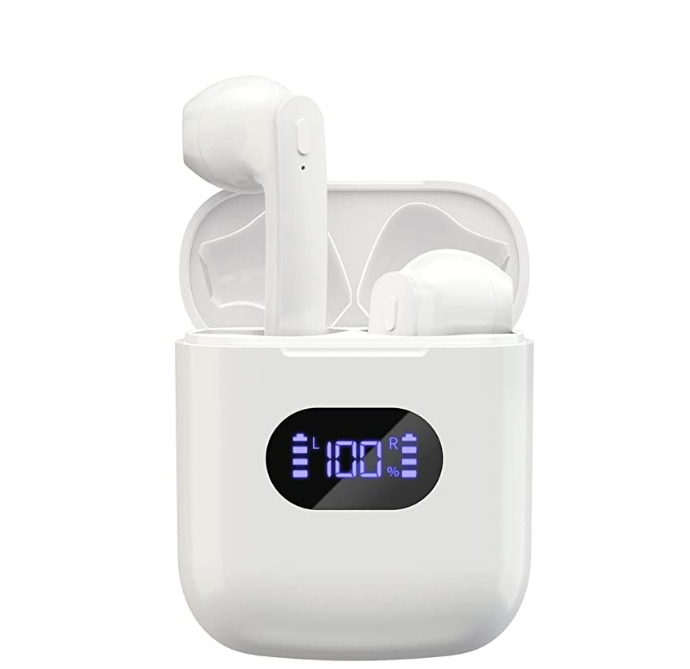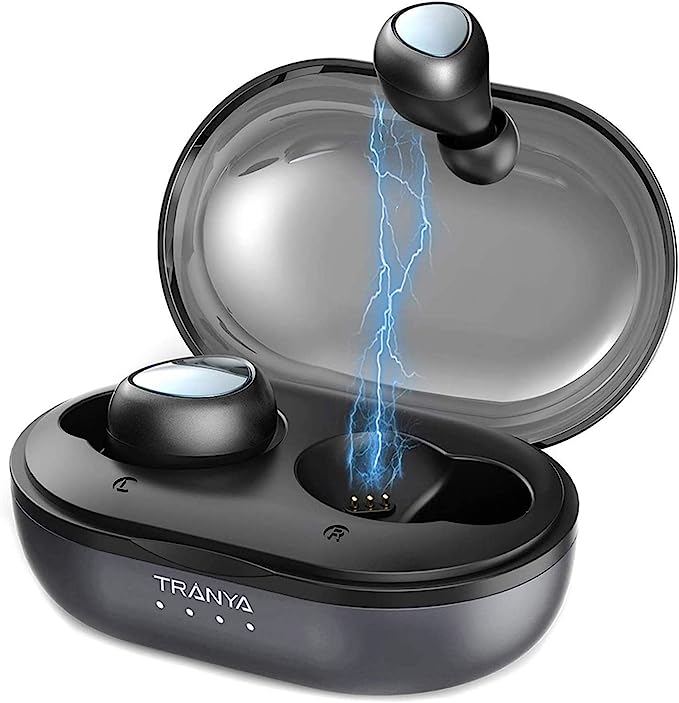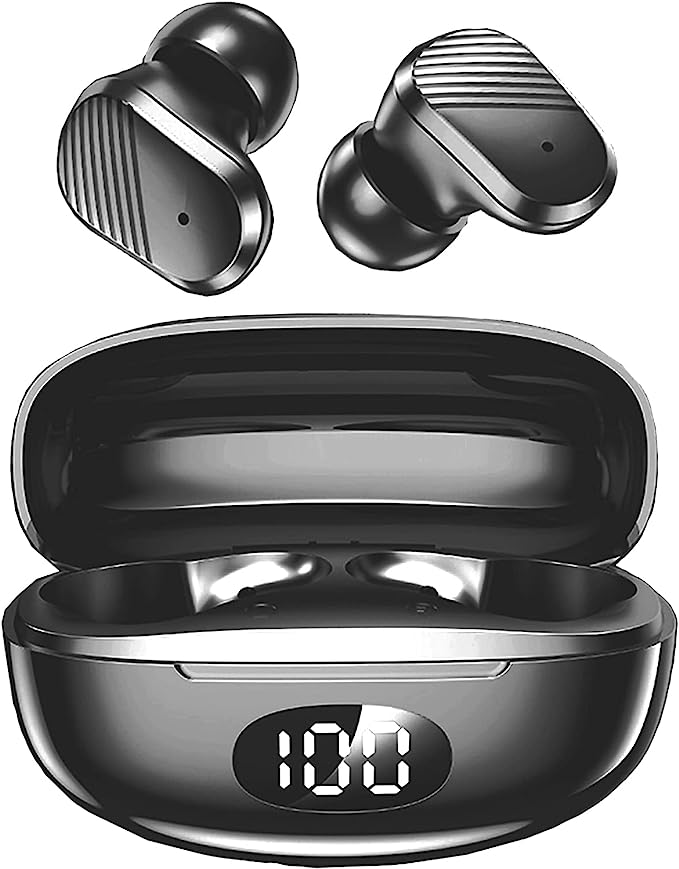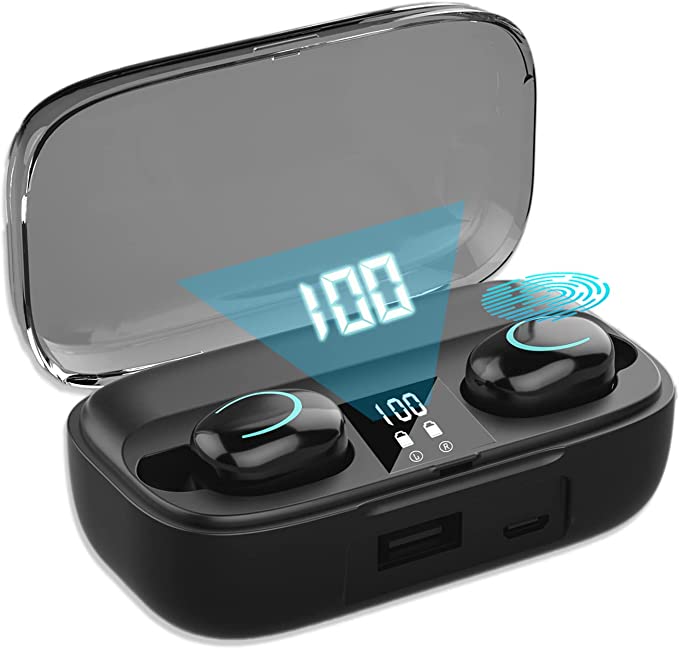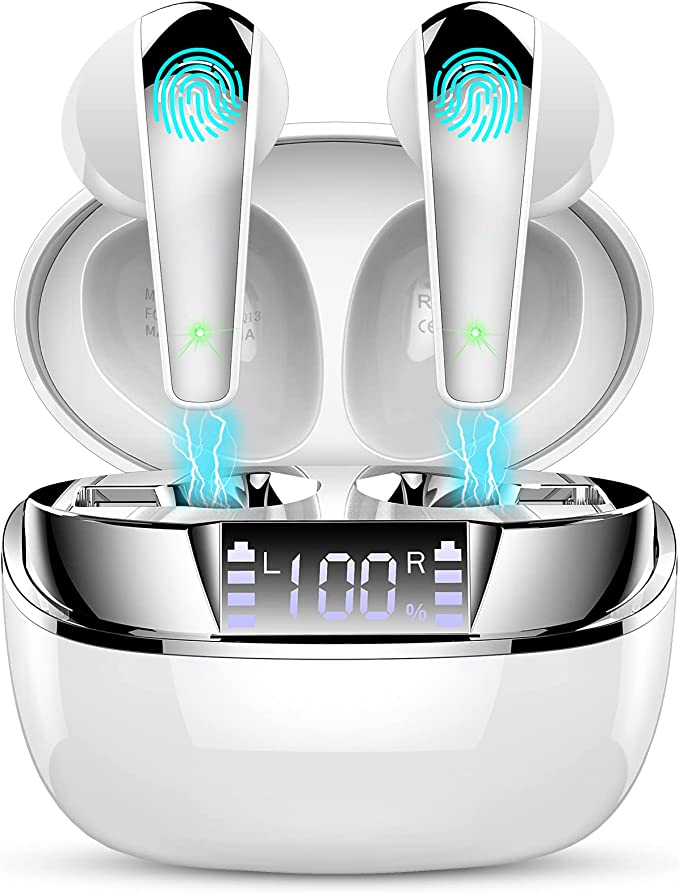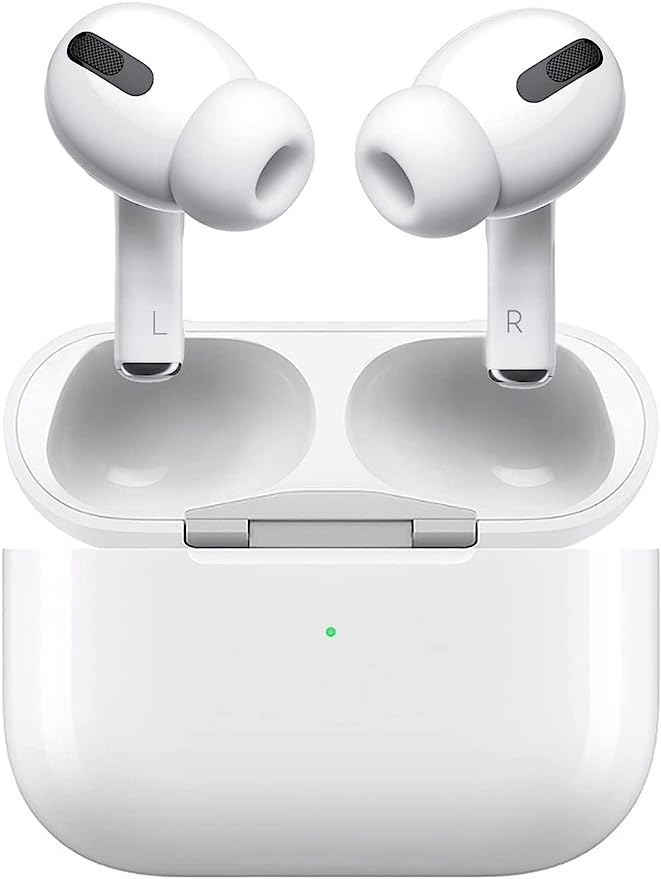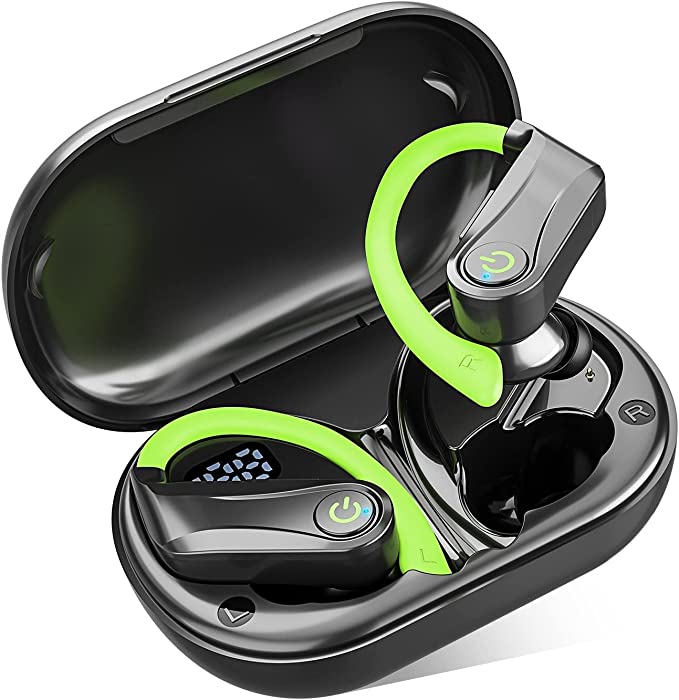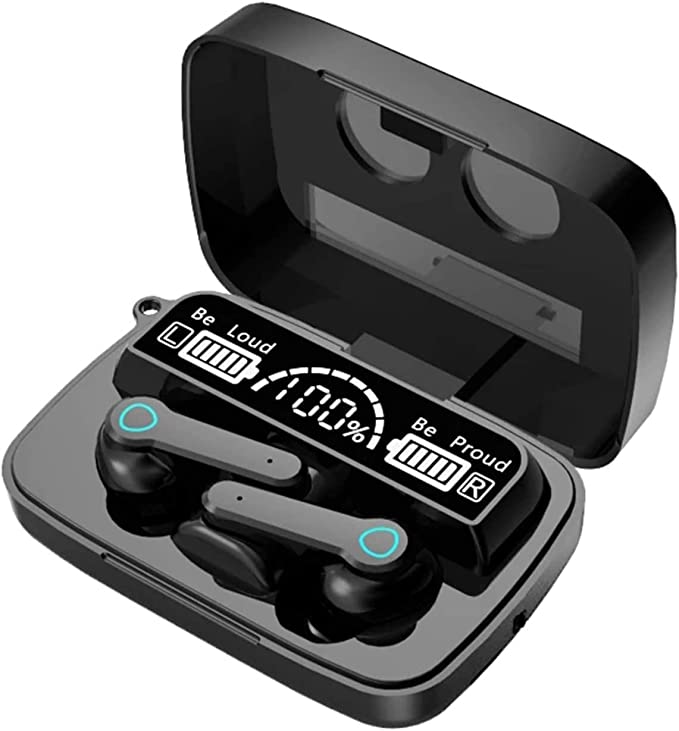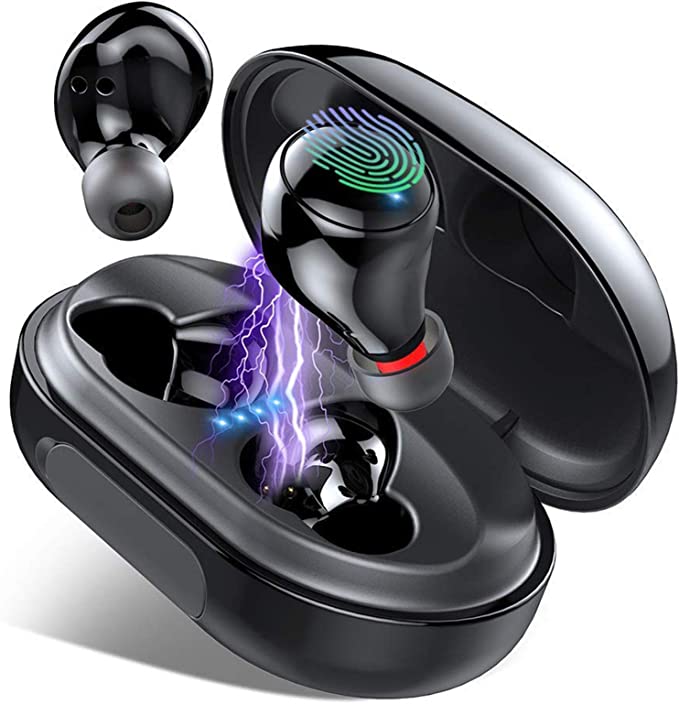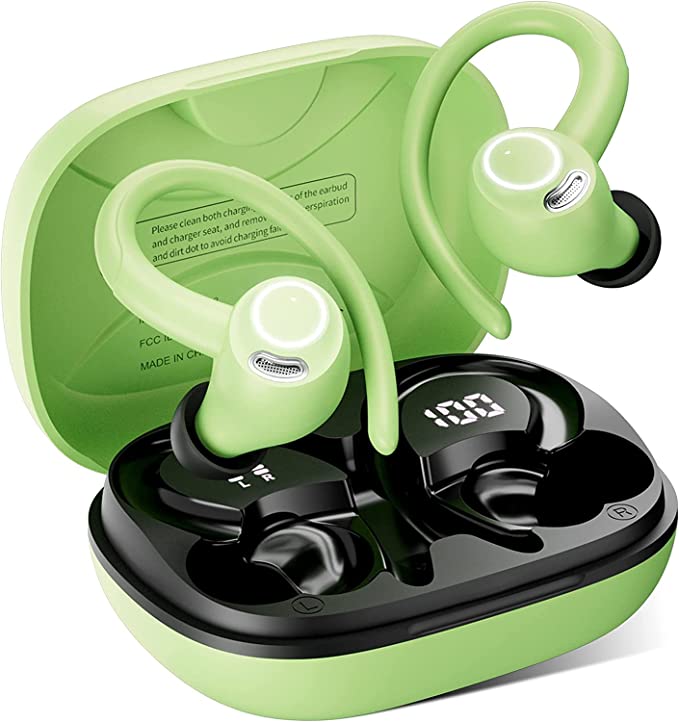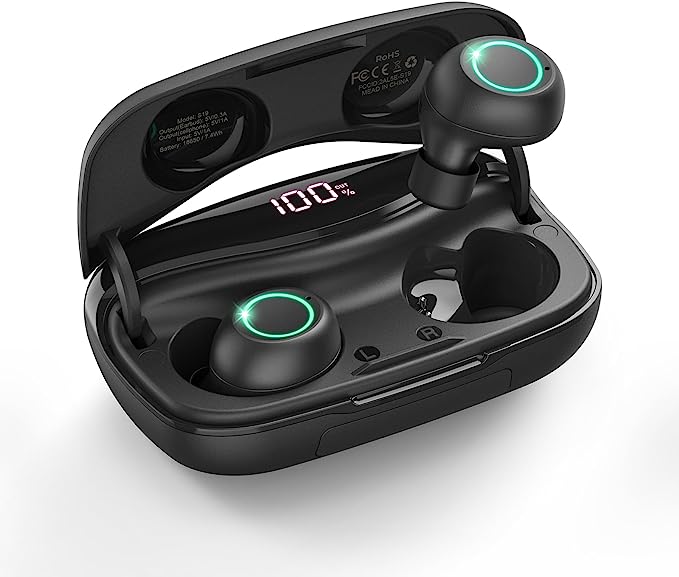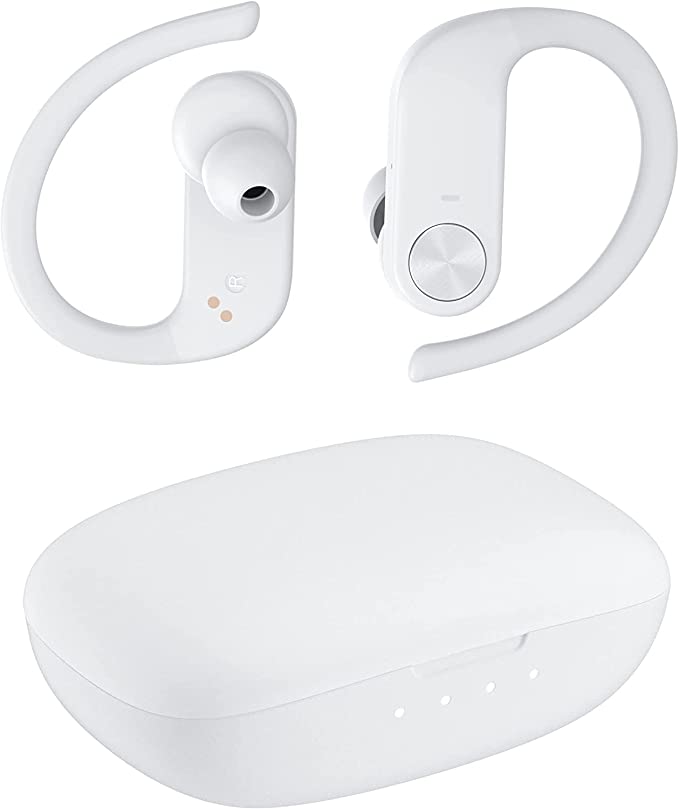Rythflo FF88 Bluetooth Headphones – A Dynamic and Versatile Choice
Update on June 19, 2025, 1:32 p.m.
In our hyper-connected lives, the soundtrack is almost always wireless. We glide through commutes, power through workouts, and connect on calls, all untethered. Yet, the technology that makes this seamless audio experience possible is often shrouded in a fog of acronyms and feature claims. Take, for instance, a product like the Rythflo FF88 Bluetooth Headphones. Its online listing might tout “V5.2 Wireless Bluetooth,” “30Hrs Playtime,” “IPX7 Sweatproof,” and a “Deep Bass Headset.” But what do these terms truly signify for the discerning “Adult” user, beyond the digital shelf appeal? Let’s embark on a journey to decode the science, sift through the history, and reveal the practical magic – or perhaps, the mundane mechanics – behind these ubiquitous features, using the FF88 as our illustrative case study.

The Invisible Handshake: Bluetooth 5.2 and the Dance of Data
The very term “Bluetooth” has a rather charming, and surprisingly regal, origin. It’s named after Harald “Bluetooth” Gormsson, a 10th-century Danish king famed for uniting Denmark and Norway. The tech pioneers who chose this moniker envisioned their wireless standard uniting disparate devices just as King Harald united his realms. A poetic start for a technology that has profoundly reshaped personal audio.
From its early, somewhat clunky iterations, Bluetooth has evolved dramatically. We’ve moved from basic cable-cutting convenience to the sophisticated data-streaming capabilities of today. A pivotal moment was the introduction of Bluetooth Low Energy (BLE), which revolutionized power consumption and opened doors for a new generation of battery-conscious wearables. The Rythflo FF88 claims to leverage Bluetooth V5.2, a relatively recent iteration. So, what does this version theoretically bring to your listening experience?
Think of Bluetooth 5.2 as offering a more refined wireless “handshake” between your headphones and your source device (like a smartphone). One key area of improvement lies in connection stability. Features like the Enhanced Attribute Protocol (EATT) within Bluetooth 5.2 are designed to make connections more robust, especially in environments радиочастотно перегруженных (crowded with radio signals). This translates to fewer frustrating audio dropouts during your favorite podcast or important call.
Then there’s the potential for greater operational range. While walls and interference always play a part, Bluetooth 5.2 generally offers a longer digital leash compared to older versions, giving you more freedom to wander from your phone without the music stuttering. Perhaps most crucially for a device boasting long playtime, Bluetooth 5.2 is built on a foundation of power efficiency. Its underpinnings, related to the broader LE Audio standard, mean that the Bluetooth chip itself sips energy, contributing significantly to that marathon battery life. For the Rythflo FF88, this V5.2 heart promises a foundation for a smoother, potentially longer-ranging, and more power-frugal connection for your music, sports, and calls – a critical trifecta for an “Adult” user valuing reliability.

Shield Against the Storm: Demystifying IPX7 Waterproofing
When you see “IPX7 Sweatproof” emblazoned on the Rythflo FF88‘s description, you’re looking at a specific rating from the Ingress Protection code, formally known as IEC 60529. This international standard is a way to classify how well an electrical enclosure (like your earbuds) resists intrusion from foreign bodies – think dust, and in this case, crucially, water.
Let’s break down “IPX7.” The “IP” is straightforward: Ingress Protection. The “X” that follows is often misunderstood. It doesn’t mean “zero protection” against solids like dust; rather, it signifies that the device was not specifically tested or rated for solid particle ingress under this particular IP code variant. The manufacturer might have other dust-resistance measures, but the “X” means this specific rating focuses purely on liquid protection.
The “7” is where the aquatic adventure begins. This digit indicates a high level of water protection. Specifically, an IPX7-rated device must be able to withstand immersion in fresh water up to 1 meter deep for a continuous 30 minutes without harmful ingress of water. Imagine accidentally dropping your earbuds into a sinkful of water or a puddle; IPX7 suggests they should survive the plunge if retrieved reasonably quickly. Achieving this involves meticulous engineering: precision-sealed casings, potentially hydrophobic coatings on sensitive components, and careful material selection.
For the Rythflo FF88, being “IPX7 Sweatproof” means it’s designed to handle much more than just a light drizzle. It should comfortably shrug off intense workout sweat, a run 경쟁 in the rain, or an accidental splash by the pool. This level of resilience is a game-changer for active individuals or anyone who simply wants their audio gear to be a bit more life-proof. However, it’s wise to remember this is for fresh water; saltwater and other liquids can be far more corrosive, and it’s generally not recommended to intentionally submerge IPX7 devices for swimming unless explicitly stated by the manufacturer for that activity.

The Marathon Listener: Unpacking 30 Hours of Playtime
A claim of “30Hrs Playtime,” as seen with the Rythflo FF88, is a bold statement in the world of portable audio. Such endurance is a testament not just to one component, but to a symphony of efficient technologies working in harmony, chief among them being the modern Lithium-ion (or Lithium-polymer) battery. These marvels of electrochemistry are the unsung heroes of our mobile lives, packing a significant energy punch into remarkably small and lightweight packages, and largely free from the “memory effect” that plagued older battery chemistries.
But achieving that impressive 30-hour figure isn’t solely about cramming in the largest possible battery. It’s an intricate dance of “开源 (increasing supply)” and “节流 (reducing demand).” * Bluetooth’s Frugal Sip: As we touched upon, the power-efficient nature of Bluetooth V5.2, especially its Low Energy aspects, plays a vital role in minimizing the energy drain from wireless communication. * The Smart Conductor: Sophisticated Power Management Integrated Circuits (PMICs) within the headphones act like an intelligent conductor, meticulously managing how power is distributed and consumed by various components, ensuring no precious joules are wasted. * The Software Diet: Optimized firmware running on the headphones’ internal processor, and potentially efficient audio codecs (the software счастье that compresses and decompresses your audio, though the FF88’s supported codecs are not specified), also contribute to stretching out that playtime.
It’s important, however, to view such playtime claims with an understanding of “the asterisk.” Manufacturers typically achieve these figures under ideal laboratory conditions: moderate volume, a strong and stable Bluetooth connection, specific audio codecs, and ambient temperatures. In the real world, if you crank up the volume, are in an area with a weak signal causing the Bluetooth radio to work harder, or use a particularly power-hungry codec, your actual mileage may vary. Nevertheless, a 30-hour claim for the Rythflo FF88 suggests the potential for several days of typical commuting, multiple gym sessions, or even a long-haul flight without a desperate scramble for a charger, significantly alleviating that all-too-common “battery anxiety.”

The Ergonomic Embrace: Neckbands, Magnets, and Mature Design
The physical design of headphones is as crucial to the user experience as the electronics within. The Rythflo FF88 opts for a Magnetic Neckband form factor, a design choice that carries several ergonomic and practical advantages, especially appealing to an “Adult” user base that often prioritizes comfort and utility.
Why a “collar” of sound? The neckband design cleverly distributes the weight of the battery and main electronics across the flexible band that rests on the user’s neck, rather than concentrating it all in the earpieces. This can lead to significantly better comfort during extended listening sessions – think a full workday of calls or a long audiobook. For active users, a neckband generally offers a more secure fit than individual true wireless earbuds, minimizing the unnerving prospect of an earbud dislodging and vanishing mid-stride or mid-jump. Furthermore, the neckband often provides more internal volume, which engineers can utilize for larger batteries (contributing to that long playtime) or more optimally placed antennas for a more reliable Bluetooth connection.
Then there’s the simple yet satisfying “snap” of the magnetic earbuds. This isn’t just a neat party trick; it’s a profoundly practical feature. The magnets, usually embedded in the back of each earpiece, allow them to click together when not in use. This elegantly solves the age-old problem of tangled earbud wires in a pocket or bag, and keeps the headphones neatly secured around your neck like a high-tech amulet, always at the ready. It’s a small detail that contributes significantly to a tidier, more organized user experience. (As a tech aside, some more advanced neckbands even use Hall effect sensors in conjunction with these magnets to automatically pause music when the earbuds are snapped together and resume when pulled apart – a clever touch, though it’s not specified if the FF88 incorporates this.)
The Rythflo FF88’s choice of this form factor hints at a design philosophy centered on practical, all-day wearability. It’s a style that fits well with an active lifestyle, a busy commute, or simply a desire for headphones that are there when you need them and unobtrusively out of the way when you don’t, aligning with a mature preference for function seamlessly blended with form.
The Quest for “Deep Bass”: Navigating the Low Frequencies (A Balanced View)
The claim of a “Deep Bass Headset” is a common enticement in headphone marketing, and for good reason. That satisfying thump, the resonant rumble of a bassline, or the impactful kick of a drum – these low-frequency sounds form the very foundation of much of the music we love. But what does “deep bass” actually mean from a scientific perspective, and how does a compact in-ear device like the Rythflo FF88 aim to deliver it?
Sound, at its core, is a vibration traveling as a wave. The frequency of this wave determines its pitch – low frequencies produce bass notes, while high frequencies give us treble. The human ear can typically perceive sounds ranging from about 20 Hertz (Hz) to 20,000 Hz. That “deep bass” territory generally lies below 250 Hz.
Now, coaxing powerful and articulate bass from the tiny drivers nestled within in-ear headphones is a significant acoustic challenge. Several factors come into play: * The Driver’s Heart: Most in-ear headphones, likely including the FF88, use dynamic drivers. These are like miniature versions of traditional loudspeaker drivers, with a diaphragm that vibrates to create sound. The size of this diaphragm, its material, its excursion capability (how far it can move), and the strength of its magnet all influence its ability to reproduce low frequencies effectively. * The Tiny Echo Chamber: The acoustic design of the earbud housing itself is crucial. Engineers meticulously shape this small space to manage airflow and control resonances, aiming to enhance bass response without making it sound muddy or boomy. * The Seal of Approval: Perhaps most critically for in-ear bass, a snug and complete seal between the eartip and your ear canal is paramount. This seal creates a closed acoustic chamber, allowing the low-frequency pressure waves to build up properly and be perceived by your eardrum. Without a good seal, bass frequencies tend to “leak” out, resulting in a thin, anemic sound. This is also why effective passive noise isolation (the physical blocking of external sound by the eartips) often goes hand-in-hand with good bass.
When the Rythflo FF88 promises “Deep Bass,” it’s signaling an aspiration for a full-bodied, impactful low-end. However, without specific details on its driver technology, acoustic tuning, or even the variety of eartips provided to ensure that crucial seal, it’s a claim best approached with scientific curiosity rather than an audiophile’s certainty. The perception of bass is also highly subjective and can be influenced by the music genre, the recording quality, and individual listening preferences.

Listening with Understanding in a Wireless World
Through the lens of the Rythflo FF88 Bluetooth Headphones and its listed specifications, we’ve journeyed into the fascinating science and engineering that power our everyday wireless audio experiences. From the regal origins and intricate workings of Bluetooth 5.2 to the robust resilience promised by IPX7 waterproofing, the impressive endurance of a 30-hour playtime, the thoughtful ergonomics of neckband and magnetic designs, and the acoustic aspirations of “deep bass” – each feature is a testament to continuous innovation.
It is, however, crucial to circle back to the present reality of the Rythflo FF88 itself. As per its product listing, it is “Currently unavailable,” and there are “No customer reviews.” This means that while we can dissect and appreciate the potential of its claimed features based on established technological principles, its actual real-world performance, build quality, and user satisfaction remain, for now, an unwritten chapter. This article, therefore, serves not as a product endorsement, but as an exercise in scientific literacy, using a product’s claims as a springboard for understanding.
Ultimately, navigating the ever-expanding universe of wireless audio technology is less about chasing the latest buzzword and more about understanding the underlying principles. When you comprehend what Bluetooth 5.2 theoretically offers over its predecessors, or what an IPX7 rating truly means for your lifestyle, you are no longer just a passive consumer of marketing jargon. You become an informed individual, empowered to make choices that genuinely align with your needs and expectations.
The sonic horizon continues to unfold. Technologies like LE Audio promise even greater efficiency and new functionalities like Auracast™ broadcast audio, which could redefine shared listening experiences. Personalized spatial audio is becoming more mainstream, aiming to create truly immersive soundscapes. As these advancements arrive, a foundational understanding of the science will be your best guide. May your listening always be clear, your connections stable, and your choices enlightened by a touch of scientific wonder.
